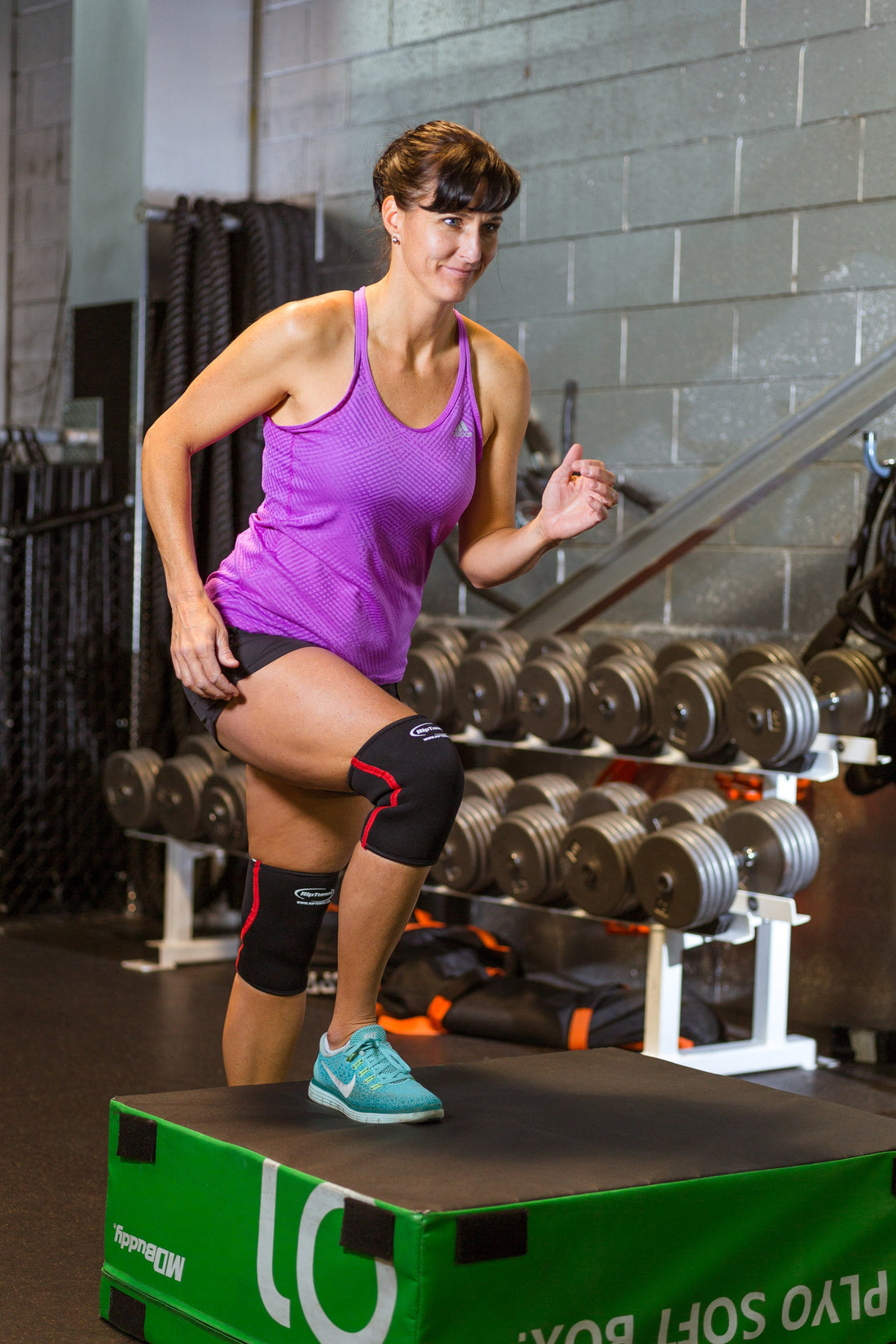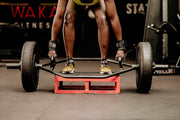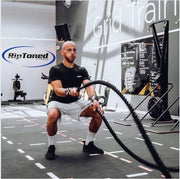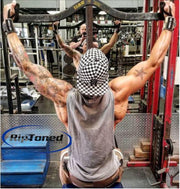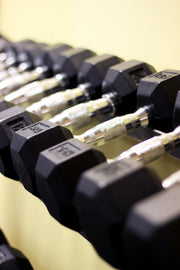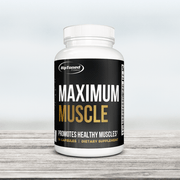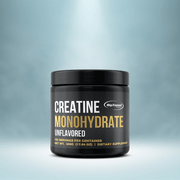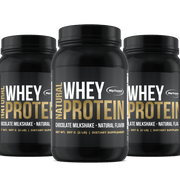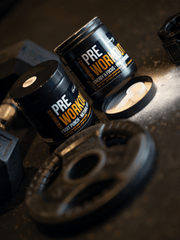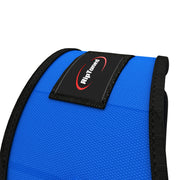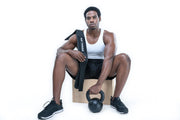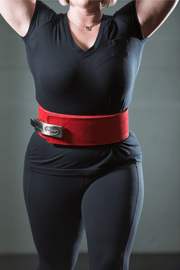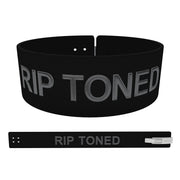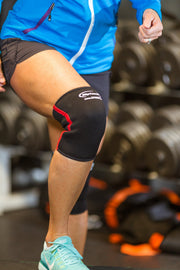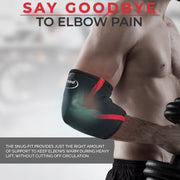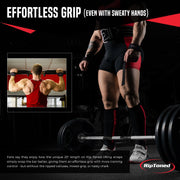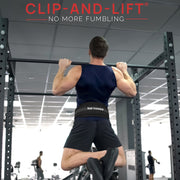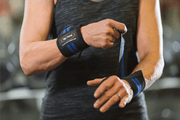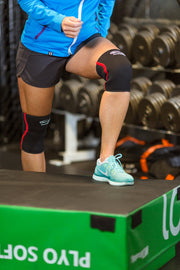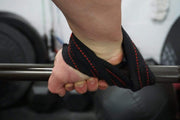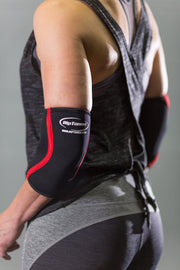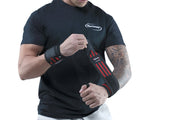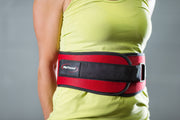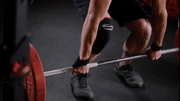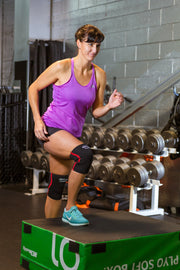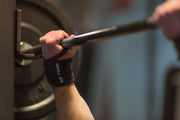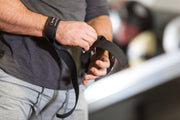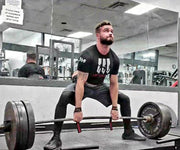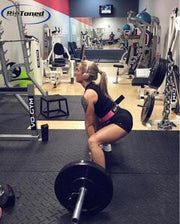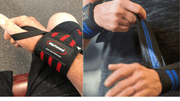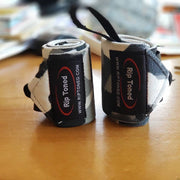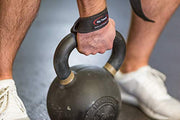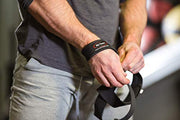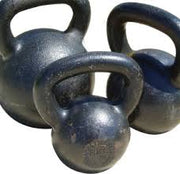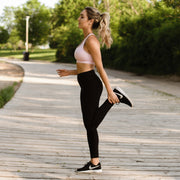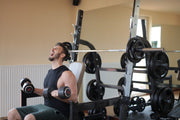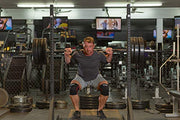Are your knees feeling achy and sore after a long day of heavy lifting? With so many support options available, it can be not easy to know which one is right for you.
In this blog post, we'll discuss the battle between knee wraps and sleeves - two popular choices when it comes to protecting your knees from knee pain and strain.
We'll explore their benefits and investigate how you can determine which one works best for keeping your knees in prime condition during workouts.
The Basics of Knee Wraps and Sleeves and their Benefits
The most common purpose of both knee wraps and sleeves is to provide support and compression to the knee joint. However, the way they achieve this differs greatly.
Knee Wraps
Knee wraps are made from elasticated material and are usually around 2 meters in length. They are designed to be wrapped tightly around the knees, providing compression and stability.
Some of the benefits of knee wraps include:
-
Increased stability and support: The tight wrapping of the elasticated material around the knee joint helps to keep it stable during heavy lifting, reducing the risk of injury.
-
Improved blood flow: The compression from knee wraps can help increase circulation in the knees, providing a steady supply of oxygen and nutrients to aid in recovery.
-
Added power: Many athletes claim that knee wraps help them lift more weight due to the extra support and tightness they provide.
Knee Sleeves
Knee sleeves, on the other hand, are pre-made elasticated supports that slide over the knees. They come in a variety of thicknesses, with some offering more compression than others.
The benefits of knee braces and sleeves include:
-
Joint warmth: Similar to knee wraps, the compression from knee sleeve can help keep your knees warm and improve blood flow.
-
Reduced risk of injury: Knee sleeves provide support to the knee joint, reducing the risk of strains or sprains during workouts.
-
Increased proprioception: The added compression from knee sleeves can help athletes feel more in tune with their movements, leading to better form and technique.
How to Measure for the Perfect Fit
When it comes to choosing between knee wraps vs knee sleeves and sleeves, the fit is crucial. Here's how you can determine the size you need:
-
Knee Wraps: Typically these measure between 72-80 inches. You can find some slightly shorter or longer if needed. Since you simply wrap these around your leg/knee to the desired tightness each application is as suited for the user.
-
Knee Sleeves: Each company measures their knee sleeves slightly different but Rip Toned measures theirs this way:

It's important to note that for both knee wraps and sleeves, you should choose a size that provides enough compression without causing discomfort or limiting movement.
Pros and Cons of Using Knee Wraps vs Sleeves
As with any fitness accessory for athletes wearing knee sleeves, there are pros and cons to using both knee wraps and sleeves.
Pros of Knee Wraps:
-
Provide strong support for heavy-lifting
-
Help increase power and PRs
-
Can improve blood flow
Cons of Knee Wraps:
-
Require proper wrapping technique to avoid injury or discomfort
-
It can limit the range of motion if wrapped too tightly
- Takes more time to put on and take off between sets
Pros of Knee Sleeves:
-
Easy to put on and take off
-
Can provide warmth and support during low-intensity workouts
-
Help improve proprioception
- With high compression weightlifting knee sleeves you can notice improved performance in exercises like squats.
Cons of Knee Sleeves:
-
Sleeves with less compression (less than 7mm) may not be as effective for heavy lifting compared to knee wraps
-
Sleeves with less compression (less than 7mm) may not provide enough support for those with existing knee injuries.
Selecting the Right Material For Your Situation
The most common question and concern about knee wraps and knee sleeves vs. is which material to choose. Here's a quick breakdown:
-
Neoprene: This is the most popular material for knee sleeves as it provides good compression and support while remaining flexible and comfortable.
-
Elastic: Used in knee wraps, elasticated material provides a tight fit that helps with stability during heavy lifting. It also allows for a customized fit.
-
Cotton: knee straps made from cotton are more breathable and lightweight compared to other materials, making them a popular choice for those who don't need as much support.
-
Polyester: This material is often used in knee sleeves and provides good compression while also being moisture-wicking, making it a great choice for high-intensity workouts.
Tips for Wearing Knee Wraps or Sleeves Properly
Both knee wraps and sleeves can be highly effective tools for supporting your knees during workouts, but it's important to use them correctly to prevent injuries and avoid any potential risks.
Tips for Wearing Knee Wraps:
-
First, wrap your knees with a thin layer of cloth or athletic tape to avoid any potential pinching from the elastic material.
-
Start at the bottom of your knee and wrap upwards towards your thigh, making sure to keep an even tension.
-
Be sure not to wrap too tightly, as this can restrict blood flow and cause discomfort.
-
Unwrap the wraps between sets to allow blood flow to return and prevent swelling.
Tips for Wearing Knee Sleeves:
First, make sure to choose the correct size by measuring as per the size chart above.
-
Slide the sleeve onto your foot and slowly pull it up over your knee, making sure to smooth out any wrinkles.
-
Avoid wearing knee sleeves for extended periods, as they can cause discomfort or restrict circulation if worn too tightly.
-
Remove the sleeves after workouts to allow your skin to breathe and dry out any sweat.
Choosing the Best Support for Your Needs
When it comes down to it, the best support for your knees will depend on your individual needs and preferences.
Knee Wraps:
If you are looking for knee wrap for support for heavy lifting and increased power, knee wraps may be a good choice for you.
Plus, with proper technique and frequent unwrapping between sets, you can prevent any potential risks or discomfort.
Knee Sleeves:
Knee sleeves are a great option for those looking for support during workouts and improved joint warmth.
They also provide added proprioception to help improve form and technique.
Ultimately, the choice between knee wraps vs sleeves will come down to personal preference and the type of support you need for your specific workouts. Remember to choose a size and material knee sleeves that is comfortable and provides enough support without causing any discomfort or restricting movement.
Consult with a medical professional if you have any pre-existing knee injuries before using knee wraps or sleeves. With the right fit and proper use, both knee wraps and sleeves can be valuable tools in your fitness journey.
FAQs
How effective are knee wraps?
Knee wraps can be highly effective in providing support for heavy lifting and increasing power. They work by compressing the knee joint, which helps improve blood flow and reduce the risk of injury. However, it's important to use them correctly to avoid any potential risks or discomfort. Proper knee wrapping technique and frequent unwrapping between sets are necessary to get the most benefit from knee wraps. Consult with a medical professional if you have any pre-existing knee injuries before using them.
Should I squat with knee wraps?
Squatting with knee wraps can help increase stability and support, especially during heavy squats and lifts. However, it's important to properly use knee wraps on your knees and use the appropriate weight for your fitness level to avoid any potential risks or discomfort. Consider consulting with a trainer or medical professional before incorporating knee wraps into your squatting routine.
Can I wear sleeves all day?
It's not recommended to wear knee sleeves for extended periods as they can cause discomfort or restrict circulation if worn too tightly. They are best used during workouts or other physical activities and should be removed afterward to allow your skin to breathe and dry out any sweat. Consider using knee sleeves only when necessary for added support and joint warmth. If you experience any discomfort, remove the sleeves immediately. Overall, it's important to listen to your body and prioritize comfort and safety when using knee wraps or sleeves.
Conclusion
To recap, knee wraps and sleeves are two popular pieces of equipment to help provide external support for the knees during weightlifting workouts. Wraps can offer more tension than sleeves, and their non-stretchy construction gives elastic energy and more support.
Sleeves provide more mobility but need more security. Ultimately, choosing between the two is a matter of preference. Whether you opt for knee wraps or knee sleeves, make sure they fit properly to give your joints the best support possible and protect them from injury.
Thanks for joining us today for this discussion on the battle of knee wraps vs sleeves: finding the perfect support for your knees! If you have any questions or would like to share your thoughts about the topic, please leave a comment below - we'd love to hear from you!

Check out our Rip Toned weightlifting knee sleeves here

